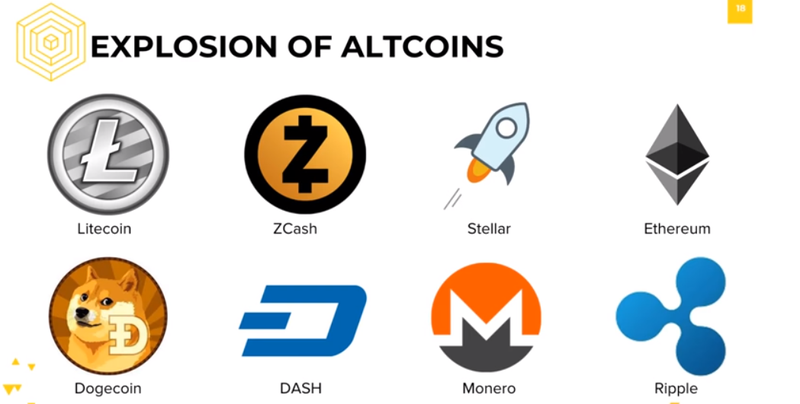
Between November 1st and 30th, 2013, the price of Bitcoin rose from just under $200 to over $1000 In late 2013, the Bitcoin bubble hit its peak at around $1,165 before suddenly bursting and entering a bearish run that lasted until the end of 2015.
There are a couple speculations about why the bubble occurred:
∴ Chinese investors bought bitcoins as a speculative financial investment. Many sold because of warnings issued by the Chinese government.
∴ Automated trading in Mt. Gox may have artificially driven the price up by continuously buying bitcoins.

Soon after the creation of Bitcoin, other cryptocurrencies began popping up on the internet as well, each tailored to a different use case or audience.
These cryptocurrencies other than Bitcoin -- Litecoin, ZCash, Stellar, Ripple, Ethereum, Dogecoin, DASH, Monero, and others -- are known as altcoins, alt- standing for alternative.
For example, Litecoin aims to be the silver to Bitcoin’s gold. It is more progressive in its software updates and serves as a testing ground for proposed Bitcoin software updates.
In addition, ZCash uses innovative zero knowledge proofs, which are a way to prove a fact without revealing information about the fact itself.
This furthers cryptocurrency privacy by allowing transactions to be validated without revealing information about the sender, recipient, and value transferred.
Stellar and Ripple pioneered new federated consensus algorithms, eliminating the need to waste electricity solving cryptographic hash puzzles.
These are just a few examples of how coins other than Bitcoin are trying to solve their own individual problems, making for a wider crypto-space.
Comments